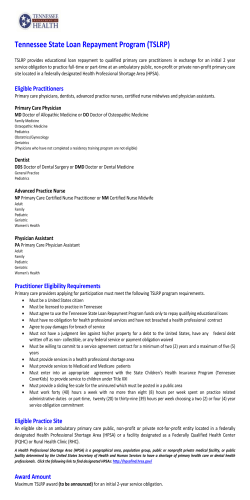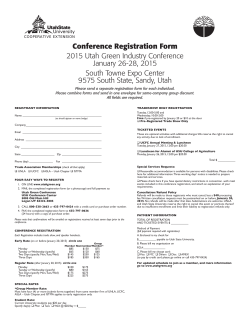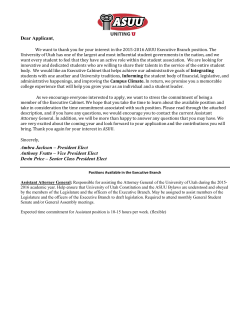
Water Allocation - Learn Genetics
NAME Learn.Genetics.utah.edu GENETIC SCIENCE LEARNING CENTER DATE Water Allocation Stakeholder Groups Agriculture Group This group represents farmers and ranchers who work to raise fruits, vegetables, grains, and animals that are sold in supermarkets as food. They rely on water to irrigate crops and maintain pastures for grazing animals. A water shortage could lead to plant crop failure and decreases in the number of animals raised for meat and milk. These changes could lead to short-term food shortages and increases in food prices for consumers. In the longer term, a water shortage could impact farmers' and ranchers' ability to produce food in future years as they work to recover economic losses. Amount of Water Needed: 3,500,000 acre-feet /year Commercial Land Development Group Commercial land developers build facilities like shopping malls, business parks, sports fields, hotels, and education campuses. These kinds of developments need water for things like irrigating green spaces, cooking, cleaning, laundry and bathroom use, and fire protection. Businesses in commercial spaces cannot function without a dependable water supply. A water shortage would limit this group’s ability to attract investors and businesses. A severe water shortage would impact their access to adequate fire protection. Amount of Water Needed: 750,000 acre-feet/year Community Residents Group This group represents residential community members, who value the convenience of clean drinking water available straight from the tap. The average US household uses approximately 194 gallons per person each day. This group uses water for drinking, food preparation, washing, flushing toilets, and watering lawns and gardens. A water shortage would impact aesthetics, health, and sanitation. Amount of Water Needed: 225,000 acre-feet/year for 1 million people © 2014 University of Utah Water Allocation - Stakeholder Groups 1 Learn.Genetics.utah.edu NAME GENETIC SCIENCE LEARNING CENTER DATE Water Law Experts Water flows across city, county, and state boundaries, with many people counting on using it along the way. A complex system of rules is in place to establish water rights, including who is allowed to use the water flowing through their area, whether or not users are allowed to divert it, and how much users are allowed to take. Water rights can be bought and sold, giving them great financial value. Some states sell water to other states, bringing revenue to many communities. Private companies who have secured rights to sell water on their lands may also establish pipeline diversions. In order to honor all water rights agreements, states must allocate enough water to meet the terms they have agreed to. A water shortage would mean re-negotiating complex and historical water rights agreements in court, potentially lasting for years. Amount of Water Needed: 300,000 acre-feet/year to honor existing agreements. Recreation and Wildlife Protection Advocacy Group This group advocates for the preservation of natural habitats for animals and plants. They know that the continued health of natural ecosystems relies heavily on the amount and quality of water that flows through them. A water shortage could have both short-term and long-term impacts on wildlife populations and the aesthetics of natural areas. Often people who are interested in water recreation, such as boating and fishing, align themselves with wildlife advocacy groups to protect the integrity of waterways. Amount of Water Needed: 300,000 acre-feet/year Industrial, Mining, and Power-Generation Group Water is required at some point in the manufacturing process for nearly every product. The same can be said for mining, which is using increasing amounts of water to meet increases in domestic oil and gas activity. Thermoelectric power plants, built to meet increasing demands for electricity, rely on water for cooling. A water shortage could have immediate short-term impacts on this group's ability to maintain operations. In the longer term, decreases in manufactured goods, mining operations, and power generation could hurt the economy of an entire state or region. Amount of Water Needed: 50,000 acre-feet/year © 2014 University of Utah Water Allocation - Stakeholder Groups 2
© Copyright 2025









